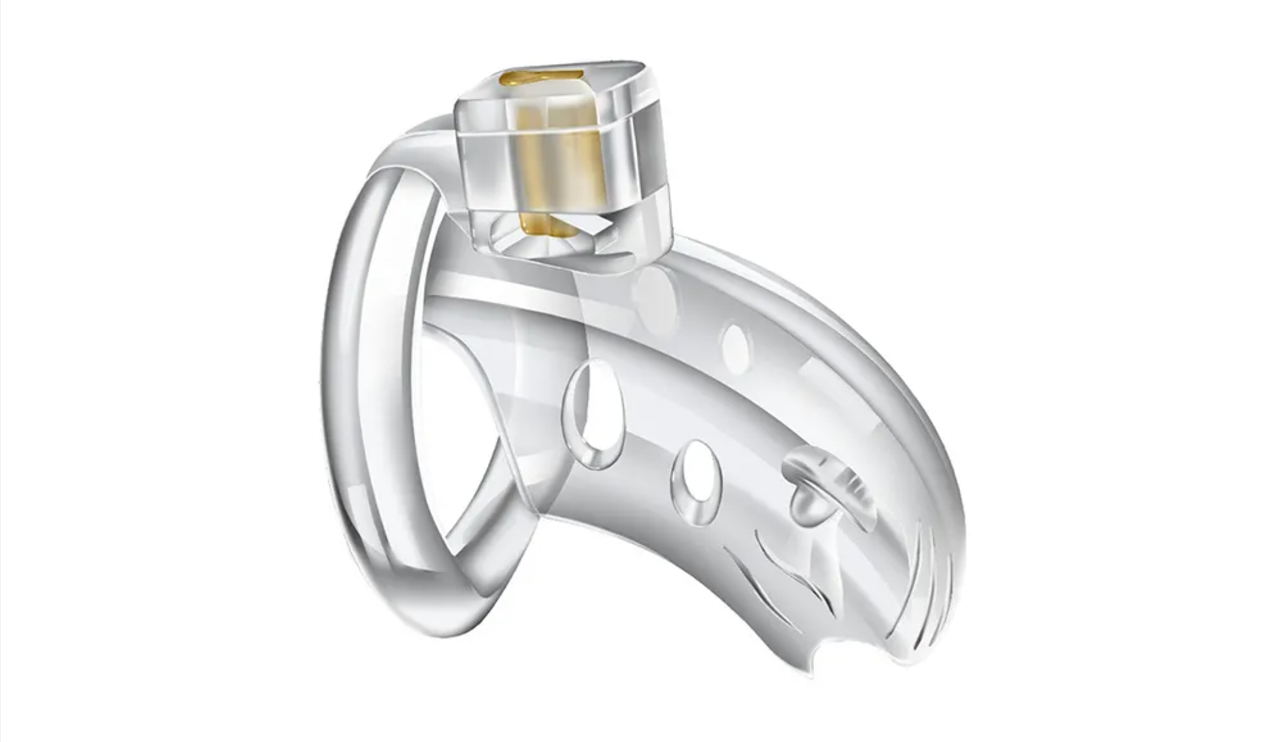A Guide on Choosing the Right Chastity Cage: Materials, Sizing, and Safety Tips
2025-03-24
Chastity play has grown in popularity as a lifestyle choice and intimate exploration. However, proper safety measures are essential for any device worn in sensitive areas. This comprehensive guide covers everything from material selection to emergency protocols, ensuring your chastity experience remains pleasurable and risk-free.
1. Choosing the Right Chastity Cage: Material Matters
Common Materials Compared
-
TPE (Thermoplastic Elastomer)
-
Pros: Lightweight, flexible, hypoallergenic, affordable
-
Cons: Less durable than metal, may degrade over time
-
Best for: Beginners, sensitive skin, short-to-medium-term wear
-
-
Surgical Stainless Steel
-
Pros: Durable, hygienic, easy to clean
-
Cons: Heavier, can be cold, may cause allergic reactions if containing nickel
-
Best for: Long-term wear, experienced users
-
-
Silicone
-
Pros: Extremely flexible, comfortable, hypoallergenic
-
Cons: Less secure, may stretch over time
-
Best for: Trial periods, those prioritizing comfort over security
-
-
Resin/Plastic
-
Pros: Lightweight, affordable
-
Cons: Can be brittle, may harbor bacteria
-
Best for: Occasional use
-
Why RUPIPI's TPE Cage Stands Out:
-
Medical-grade, body-safe material
-
Textured interior for better airflow
-
Ergonomic curvature for natural fit

2. The Science of Proper Sizing: A Step-by-Step Guide
Critical Measurements
-
Flaccid Length: Measure when completely relaxed
-
Base Girth: Circumference where the cage meets the body
-
Testicle Gap: Space behind scrotum (prevents "ball burn")
Sizing Troubleshooting Table
| Symptom | Likely Cause | Solution |
|---|---|---|
| Coldness/Numbness | Ring too tight | Increase by 5mm |
| Frequent Erections | Tube too short | Add 10-15mm length |
| Chafing Under Scrotum | Gap too small | Try oval-shaped ring |
| Morning Pain | Nocturnal erections | Use a more extensive base ring at night |
Advanced Tip: For the perfect fit, make a plaster cast of your flaccid penis before ordering custom devices.
3. Hygiene Protocol: Medical-Grade Care
Daily Cleaning Routine
-
Morning:
-
Remove the cage (if possible)
-
Wash with antibacterial soap
-
Apply talc-free powder to reduce friction
-
-
After Urination:
-
Blot dry with toilet paper
-
Consider a portable bidet for thorough cleaning
-
-
Evening:
-
15-minute air-out period
-
Moisturize with coconut oil (antibacterial properties)
-
Deep Cleaning Schedule
-
Weekly: Soak in 10% vinegar solution
-
Monthly: Replace silicone plugs
-
Quarterly: Inspect for material degradation
Infection Warning Signs
-
Unusual discharge
-
Foul odor persisting after cleaning
-
Hot-to-touch skin around the device
4. Advanced Wear Strategies
Breaking-In Schedule
| Week | Wear Duration | Notes |
|---|---|---|
| 1 | 2-4 hours | Monitor for pressure points |
| 2 | 8 hours | First workday trial |
| 3 | 24-hour | Overnight test |
| 4 | 3 days | Check hygiene routine |
Nocturnal Erection Management
-
Sleep on your back with a pillow under your knees
-
Apply an ice pack if discomfort occurs
-
Consider nighttime release until adjusted
5. Emergency Preparedness
Must-Have Safety Kit
-
Medical shears (for plastic cages)
-
Lock lubricant (graphite powder)
-
Steroid cream (for sudden irritation)
-
Backup key in a sealed envelope
When to Seek Medical Attention
-
Inability to urinate for >8 hours
-
Severe discoloration not resolving after removal
-
Signs of infection with fever
6. Psychological Considerations
Healthy Mindset Practices
-
Set clear safewords with partners
-
Maintain non-chastity intimacy
-
Schedule "check-in" days for emotional assessment
Common Adjustment Period Challenges
-
Initial frustration (2-3 week hump)
-
Body image concerns
-
Power dynamic negotiations
7. Product Maintenance
RUPIPI Cage Care Guide
-
Avoid alcohol-based cleaners (degrade TPE)
-
Store in a breathable fabric bag
-
Rotate between two devices to extend the lifespan
When to Replace Your Device
-
Visible cracks or warping
-
Lingering odors after cleaning
-
Change in flexibility (too stiff or too soft)
8. Alternative Solutions for Common Issues
-
Problem: Persistent chafing
Solution: Apply moleskin padding to problem areas -
Problem: Urine leakage
Solution: Use a cage with a larger front opening -
Problem: Temperature sensitivity
Solution: Wear supportive underwear for insulation
9. Professional Insights
Dr. Sarah Mitchell, Urologist:
"Most chastity-related injuries I see come from improper sizing. Patients often underestimate the importance of testicular space. A good rule is to ensure you can comfortably fit your pinky finger behind the ring when flaccid."
Dominatrix Elena:
"Experienced subs know that chastity isn't about enduring pain. Discomfort means something's wrong. The best long-term wearers are those who prioritize comfort over aesthetics."
10. The Future of Chastity Tech
Emerging Innovations:
-
Bright cages with health monitoring
-
Temperature-regulating materials
-
Biometric locks (only open with partner's heartbeat)
Final Checklist Before Long-Term Wear
-
✅ Tested multiple ring sizes
-
✅ Established cleaning routine
-
✅ Emergency plan in place
-
✅ Partner understands safety protocols
-
✅ Gradual wear schedule planned
Remember: The healthiest chastity experience is one where the cage enhances your life rather than restricts it. With proper precautions, you can explore this practice safely for years to come. The RUPIPI system provides an excellent foundation, but always prioritize your body's signals over any device's design.









